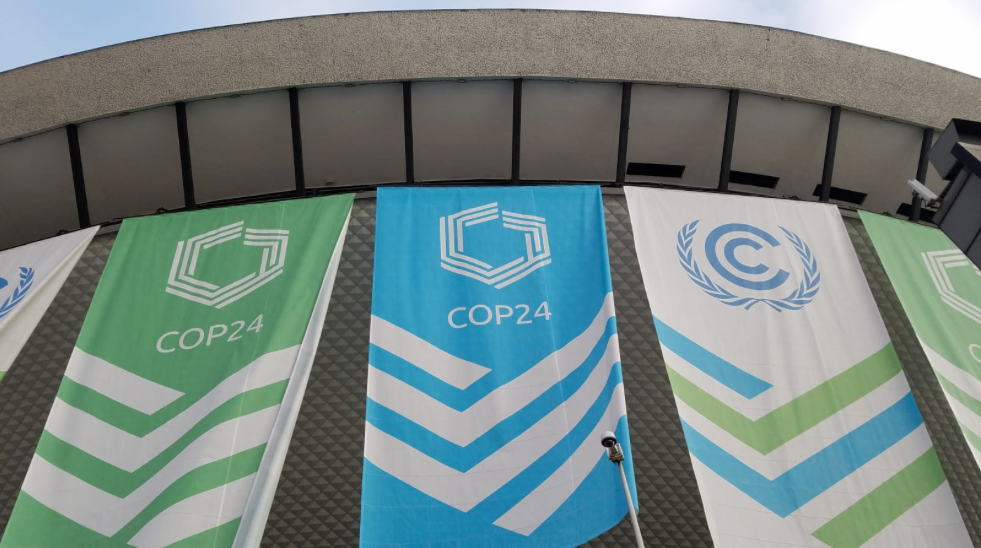So it begins! Today, delegates and stakeholders from around the world convened in Poland for the Katowice Climate Change Conference (COP24) under the United Nations Framework Convention on Climate Change. Over the coming two weeks, nations will hammer out the details of the Paris rulebook, which will set procedures to report, measure, and verify commitments under the Paris Agreement. Delegates will also undertake a facilitative dialogue, in which they will take stock of the world’s collective progress on limiting warming to 1.5—2ºC.
Duke University’s week 1 delegation was in attendance for the first day of the COP. Read below for the delegates’ reflections of the opening plenaries. A few students were delayed in Kiev due to flight cancellations, but now that the Duke delegation has all arrived in Katowice, expect daily updates and reflections from the whole team here on our blog.

Duke University delegates Corey Sugerik, Cai May Tan, and Paelina DeStephano at COP24.
Corey Sugerik
Today was the opening day of the COP and the schedule was primarily filled with plenary opening sessions. The first opening plenary started two and a half hours after it was scheduled to begin. This set an interesting tone for the beginning of the day, and the sessions themselves were essentially leaders of the various bodies reading through the provisional agendas. An interesting interaction that occurred was during the SBI opening plenary in which Ukraine urged the SBI to not count emissions from Crimea under Russia’s reports. The United States and Canada both expressed their support for the Ukraine and Russia responded by stating that the Ukraine was trying to politicize the UNFCCC. An interesting first day of the COP and I am looking forward to what the rest of the week will bring.
Cai May Tan
Today I attended the opening plenary as well as the SBI plenary. It was surreal being able to see agenda items come to life on the floor, as opposed to reading them on paper and thinking about them conceptually. Although we were seated in the observer section, I was able to pick up on the reality of negotiations and how bureaucratic the procedure was. Agenda items require many subgroup discussions and outcome reports, and then further discussion with the larger body, before being sent off to high-level plenaries. I could see how a potentially substantive push from a Party could be watered by the many layers of deliberation and finalization by power dynamics and the urgency for ‘collective’ decision-making. With that said, I’m still extremely excited to attend the plenaries to track subsidiary body agenda items, and observe the decisions go from table to paper!
Paelina DeStephano
The first day of COP was immensely procedural. We watched the opening plenaries for COP, CMP, CMA, SBI and APA. At the SBI plenary, we started to get a sense of how the immense task of drafting the Paris Rulebook would take shape. Certain modalities would be discussed though SBI in a series of informal consultations. Other modalities are more complex and will be the subject of next week’s negotiations. Given the extreme time constraint for finalizing the Paris rulebook, it was a relief to see some of the work divided up and other topics, such as the CDF, pushed to the next SBI meeting. SBI is supposed to conclude it’s meeting this week so negotiations next week can have a stronger tool for finalizing the rulebook. Since I’ll mainly be going to SBI sessions and side events, I’m excited to track their progress on hashing out the issues they’ve been tasked with, like deciding on a common timeframe for NDCs.

COP24 banners at the entry of the Katowice Climate Change Conference.
